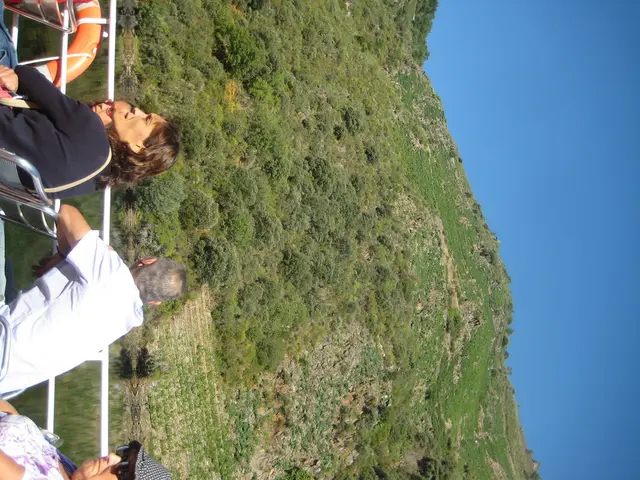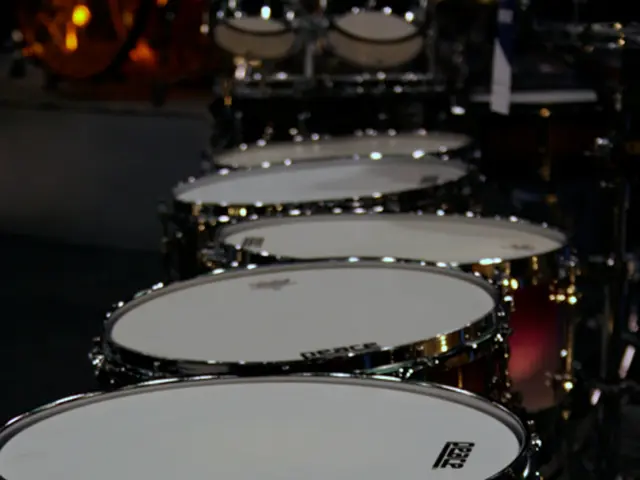Seven Suggestions for Outdoor, Inquiry-Driven Education Encouraging Innate Curiosity
In an innovative approach to education, schools are embracing the great outdoors as a living laboratory for children to explore, learn, and grow. Here are some of the exciting outdoor learning strategies being implemented:
Documenting Seasonal Changes
Establishing permanent observation plots, children revisit monthly to document seasonal changes and adaptations, fostering a deeper understanding of the natural world.
Connecting Local Data to Global Concepts
By utilising online weather databases and climate maps, local data is connected to global climate concepts, helping children understand their role in climate change.
Archaeological Adventures
Archaeological playground digs simulate real archaeological scenarios, teaching children proper excavation techniques and systematic documentation.
Nature's Pollution Detectors
Macroinvertebrates, such as caddisfly larvae, mayflies, and stoneflies, serve as nature's pollution detectors, indicating clean water, while bloodworms signal environmental stress.
Stargazing and Environmental Awareness
Exploring the stars with simple telescopes reveals human impact on natural environments, comparing star visibility from backyards versus darker rural locations.
Scientific Documentation
Encouraging detailed documentation of findings through sketches, measurements, and written observations, builds scientific literacy.
Investigating Food Webs
Observing insects feeding on plants, spiders catching flies, and birds hunting for worms, helps children understand interdependence within ecosystems.
Composting and Decomposition
Investigating composting and decomposition processes, children learn how organic matter transforms into nutrient-rich soil through natural decomposition.
Backyard Meteorologists
Weather station investigations transform backyards into living laboratories, where children become meteorologists and climate scientists.
DIY Measurement Instruments
Building simple measurement instruments using household materials, such as rain gauges from plastic bottles, wind vanes from cardboard and pencils, and barometers from glass jars, encourages hands-on learning.
Comparing Growing Mediums
Comparing different growing mediums, planting identical seeds in clay soil, sandy soil, and compost-rich mixtures, helps children observe root development and plant health.
Scavenger Hunts and Inquiry-Based Learning
Creating scavenger lists that prompt investigation instead of simple collection, encourages scientific thinking skills and observation.
Soil Science in School Gardens
Soil science experiments in school gardens help children understand the complex relationships between soil health, plant growth, and ecosystem balance.
Formulating Hypotheses
Guiding children to form hypotheses about their discoveries during scavenger hunts, encourages critical thinking and scientific inquiry.
Daily Weather Documentation
Daily weather documentation reveals seasonal patterns and helps young meteorologists make informed predictions about upcoming weather conditions.
Upstream Investigations
Upstream investigations reveal how human activities affect downstream water quality, with children mapping potential pollution sources and testing water samples before and after these input points.
Biodiversity Mapping
Biodiversity mapping connects scientific observation with hands-on exploration, revealing the intricate web of life in local ecosystems.
Engaging Scientists in Outdoor Learning
Scientists are recruited to develop effective outdoor learning strategies, through interdisciplinary university projects, leveraging networks in academic and research institutions, providing funding opportunities, and creating collaborations between researchers and educators.
Simple Telescopes and Lens Focus
Building simple telescopes using magnifying glasses and paper towel rolls allows children to understand how lenses focus light while creating functional observation instruments.
Measuring Physical and Chemical Properties
Measuring physical and chemical properties, using test strips and digital meters, helps children collect samples from different stream locations and record precise measurements.
Seasonal Water Quality Variations
Documenting seasonal variations in water quality teaches children critical thinking skills by analysing data trends and forming hypotheses about the relationship between human activities and aquatic ecosystem health.
Identifying and Cataloguing Macroinvertebrates
Children learn to identify and catalog macroinvertebrates using magnifying glasses and identification charts.
Student-Led Species Inventories
Creating student-led species inventories, challenges children to identify and count species within designated study areas.
Nature Scavenger Hunts
Nature scavenger hunts transform simple outdoor walks into powerful inquiry-based learning adventures, encouraging scientific thinking skills and observation.
Light Pollution Maps
Creating light pollution maps by recording visible star quantities from different neighborhood locations encourages children to research how artificial lighting affects wildlife behaviour and astronomical observations.
Historical Analysis
Designing compelling backstories for each dig site helps children develop historical analysis skills by connecting their findings to broader historical contexts through research activities.
Testing pH Levels and Nutrient Content
Testing pH levels and nutrient content, using pH testing kits, digital pH meters, and test strips, helps children understand why some plants thrive while others struggle.
Water Quality Assessment
The water quality assessment of local streams reveals the health of aquatic ecosystems.
These outdoor learning strategies not only make learning fun and engaging but also equip children with essential scientific skills, fostering the next generation of environmental stewards and scientists.
Read also:
- Peptide YY (PYY): Exploring its Role in Appetite Suppression, Intestinal Health, and Cognitive Links
- Toddler Health: Rotavirus Signs, Origins, and Potential Complications
- Digestive issues and heart discomfort: Root causes and associated health conditions
- House Infernos: Deadly Hazards Surpassing the Flames








